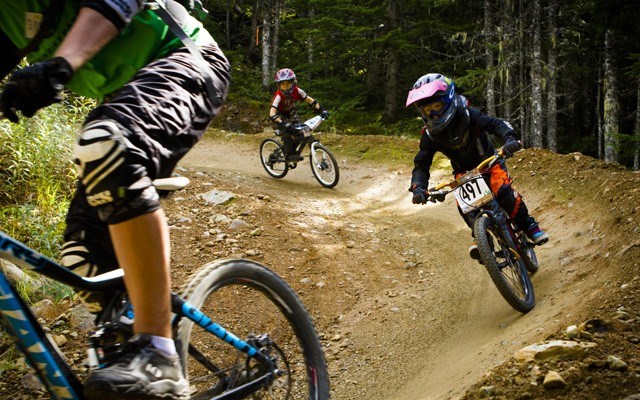A new campaign from Vancouver Coastal Health (VCH) has revealed some eye-popping numbers about Whistler's mountain biking scene.
Though the revelation that 58 per cent of serious injuries sustained in B.C. during the 2015 season occurred in Whistler is large at first blush, a VCH representative said it's not necessarily indicative the resort is a riskier place to ride bikes.
Medical health officer Dr. John Carsley noted while Whistler's injury levels were high, researchers did not have access to the number of participants in each district, and ridership here is significantly higher than other areas to which it was compared.
"It's a destination spot and the number of participants and the scale is bigger than in other parts of the province," he said. "Most places have all the same things — the same hazards — in common, but since we don't really have the number of participants in every place, we can't give you a rate of how dangerous it is."
By comparison, riders in North Vancouver sustained 13 per cent of serious injuries while Squamish saw 10 per cent. VCH made the calculations based on roughly 100 incidents where riders required emergency surgery. Nine out of every 10 injured riders was male and the average hospital stay for these riders was five days.
The numbers were released on May 27 as VCH launched its Shred Safe campaign in North Vancouver. The initiative reminds riders to take a number of safety tips into consideration so they can avoid common-but-serious injuries like broken bones, concussions, internal bleeding, organ damage, and neck and spine injuries.
"We wanted to time it with the start of the opening of the season at Whistler and other places and get the awareness going about being prudent and taking a variety of precautions that might reduce your risk of ruining your season," Carsley said.
Crashing is part of the sport, even for experienced riders, but Carsley stressed there are many ways for riders to mitigate the frequency and severity of wipeouts.
Protective equipment like helmets, neck braces, elbow pads, grippy shoes and long sleeves will help, but certainly don't provide invincibility. Carsley stressed riders need to know their limits and ride within them, as riders travelling at high speeds are more likely to be hospitalized. Adjusting one's riding to conditions, as well, is paramount.
"Everybody who does do mountain biking, particularly the downhill sport, has fallen off their bike. To some degree, it's going to happen eventually and I think what we're trying to put the emphasis on is we're not trying to take the fun out of the sport but we're just trying to reduce the chance of a bad injury," he said.
While Whistler Mountain Bike Park is only one mountain biking option in the resort, it is certainly a popular one and, given the speeds at which some athletes ride, a risky one.
Whistler Blackcomb (WB) vice-president of business development Rob McSkimming, like Carsley, pointed out the high volume of riders, and runs they can take, as a possible culprit for the community's high injury numbers.
He appreciates the Shred Safe campaign while adding WB has boosted its own safety communications, particularly at new riders, in recent years.
McSkimming directed riders to the orientation guide available both in brochure form and on the WB website. The document details the best bikes and equipment to use, as well as which trails to approach first, while also encouraging those people to receive instruction before heading out solo. As well, the bike park trail map includes a progression chart to help keep new riders on track. The WB website also has instructional videos for riders to look at before heading out for their first laps.
McSkimming also stressed since downhill riders get regular breaks to ride back up the hill, they may not properly gauge their awareness and energy levels. The VCH study found injuries are more likely to occur in the afternoon.
"People may be unaware how fatigued they can be," he said. "We try to encourage people, the longer you're out there, the more you should be dialing things back."
Other potential factors include alcohol and drug use, so riders are encouraged to ride sober.
"Don't take that last run if you just want to squeeze in one more. You want to be fit enough to get down the trail. You don't want to ride high and you don't want to ride drunk," Carsley stressed.
Additionally, McSkimming noted riders are encouraged to build up to fast laps throughout the day with instructions to pre-ride, re-ride and then freeride trails to get up to speed and ensure the trails are as they remember them.
The Whistler Off-Road Cycling Association (WORCA) is also helping to share the campaign with its members. President Craig Mackenzie said the organization will post information about the campaign on its website and distribute it in its newsletter.




